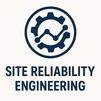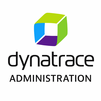
The ServiceNow ESM Training course provides comprehensive knowledge on extending ITSM principles to enterprise-wide functions such as HR, Legal, Finance, and Facilities. Participants will learn to design unified service delivery models, build service catalogs, automate workflows, manage cross-departmental SLAs, and implement self-service portals. The course focuses on leveraging the Now Platform to enhance visibility, collaboration, and operational efficiency. Ideal for professionals aiming to streamline enterprise services and support digital transformation across business units using ServiceNow's scalable ESM capabilities.
ServiceNow ESM Training Interview Questions Answers - For Intermediate
1. How does ServiceNow support multi-department workflows in ESM?
ServiceNow allows the creation of cross-functional workflows that span multiple departments using Flow Designer and Workflow Editor. These workflows automate service delivery processes that require collaboration—such as onboarding, which involves HR, IT, and Facilities. Tasks are automatically assigned to the right team, ensuring seamless coordination and visibility across departments.
2. What is the Employee Center in ServiceNow and how does it enhance ESM?
The Employee Center is a centralized portal that aggregates services, knowledge, and announcements across departments into a single user interface. It enhances ESM by offering a personalized, intuitive experience for employees, making it easier to submit requests, get help, and access relevant information—all from one place.
3. Describe the role of Virtual Agent in ServiceNow ESM.
Virtual Agent is a chatbot interface that uses Natural Language Understanding (NLU) to provide automated assistance to users. In ESM, it handles repetitive queries—such as password resets, PTO balances, or expense policies—across departments, reducing the load on service teams and improving response times.
4. How does ServiceNow enable HR Service Delivery within the ESM ecosystem?
HR Service Delivery (HRSD) in ServiceNow enables HR teams to manage employee requests efficiently. It includes modules like Case and Knowledge Management, Lifecycle Events, and Employee Document Management. These capabilities automate tasks, ensure compliance, and streamline interactions, forming a crucial pillar of ESM implementation.
5. What are Lifecycle Events in ServiceNow ESM, and why are they important?
Lifecycle Events are predefined workflows that guide users through key moments like onboarding, offboarding, or leave of absence. These events orchestrate tasks across multiple departments using templates and automation. In ESM, they ensure consistent service delivery and help maintain a positive employee experience during transitions.
6. How can ServiceNow Performance Analytics benefit ESM?
Performance Analytics provides real-time and historical data visualization through dashboards and KPIs. It helps ESM stakeholders track service metrics like request volumes, resolution times, and customer satisfaction. This visibility supports strategic planning and continuous improvement in departmental services across the enterprise.
7. Explain the significance of Domain Separation in ServiceNow ESM.
Domain Separation allows organizations to partition data and processes for different business units, geographies, or clients within the same instance. In ESM, it is especially useful for shared environments where strict data isolation is required, such as in multi-tenant scenarios or global enterprises.
8. How does ServiceNow support Facilities Management under ESM?
ServiceNow Facilities Management allows teams to track space, assets, and maintenance requests through configurable workflows. Employees can submit issues like lighting repairs or room bookings via the portal. Facilities teams benefit from automated task assignment, reporting, and integration with building management systems.
9. What are the common KPIs used to measure ESM success in ServiceNow?
Key performance indicators include request volume, average resolution time, SLA compliance rate, first contact resolution rate, and customer satisfaction score (CSAT). These KPIs help organizations monitor service effectiveness, identify process gaps, and optimize performance across departments.
10. How does ServiceNow ESM improve visibility and transparency in service delivery?
By centralizing service requests, tasks, and knowledge into a unified platform, ServiceNow provides real-time dashboards, audit trails, and role-based access to stakeholders. This transparency reduces ambiguity, builds accountability, and ensures that service levels are monitored and met across all business functions.
11. Can you describe how ESM supports Legal Operations in ServiceNow?
Legal departments can use ServiceNow ESM for contract reviews, compliance tracking, legal case management, and document requests. Automated workflows, approval chains, and deadline alerts ensure that legal services are delivered efficiently and within required timelines, improving risk mitigation and legal response times.
12. What is the purpose of Service Level Management in ESM?
Service Level Management ensures that services across departments adhere to defined SLAs. ServiceNow allows organizations to define, monitor, and enforce SLAs with automated escalation paths and breach alerts. This helps departments maintain high standards of service and meet user expectations consistently.
13. How does ServiceNow ESM help streamline Procurement operations?
In Procurement, ServiceNow can manage purchase requests, approvals, vendor onboarding, and order tracking. The automation of repetitive processes reduces cycle times, enforces compliance with procurement policies, and provides visibility into spending and vendor performance—all through ESM’s integrated workflows.
14. What are Scoped Applications, and how do they relate to ESM?
Scoped Applications in ServiceNow are modular applications with their own data, logic, and user interface components. In the context of ESM, departments can build custom applications within scopes to address specific business needs while maintaining data integrity and preventing interference with other applications.
15. How does ServiceNow ESM contribute to the employee experience?
ServiceNow ESM enhances the employee experience by offering a unified, consumer-like interface for interacting with internal services. Employees benefit from faster responses, easier access to resources, personalized notifications, and the ability to track requests. This improves satisfaction, engagement, and productivity.
ServiceNow ESM Training Interview Questions Answers - For Advanced
1. What is the role of Service Operations Workspace (SOW) in ESM, and how does it enhance service agent productivity?
The Service Operations Workspace in ServiceNow is a centralized, modern UI designed for service agents handling multiple workstreams. Within the ESM context, where agents may manage HR cases, facilities tickets, procurement requests, and IT incidents, SOW provides a unified dashboard that prioritizes tasks, displays contextual information, and integrates analytics. It supports multi-tab work, dynamic layouts, agent assist tools, and side-by-side knowledge search, allowing agents to handle cases faster and more efficiently. By consolidating relevant data from across departments into one interface, SOW reduces the time spent switching between modules and improves first-contact resolution rates—an essential requirement for high-performing enterprise service teams.
2. How does ServiceNow support continuous service improvement (CSI) across departments in ESM?
ServiceNow enables continuous service improvement by providing tools for tracking performance metrics, gathering feedback, and identifying trends across all service departments. Through Performance Analytics and Survey Management, organizations can assess the effectiveness of workflows and satisfaction with service delivery. Root cause analysis tools and automated trend alerts allow teams to proactively identify recurring issues. Departments can then iterate on processes using Flow Designer or App Engine Studio without affecting core functionalities. Combined with Change Management and Governance features, ServiceNow empowers ESM leaders to make data-informed enhancements aligned with business goals while maintaining stability and compliance.
3. How does ServiceNow manage dynamic employee journeys across departments in ESM?
Dynamic employee journeys—such as onboarding, relocation, or parental leave—span multiple departments and require orchestration across HR, IT, Security, and Finance. ServiceNow ESM handles these through Lifecycle Events, which map out task flows triggered by changes in employment status or role. These events are customizable, conditional, and sequenced, ensuring the right tasks are assigned to the right teams at the right time. For example, a promotion event may trigger equipment updates from IT, payroll adjustments from Finance, and training assignments from L&D. Employee data is updated centrally, tasks are monitored in real-time, and all stakeholders remain in sync, delivering a seamless experience.
4. What are Scoped Applications in ServiceNow, and how do they enable customized departmental solutions within ESM?
Scoped Applications in ServiceNow allow departments to build and manage their own applications in isolated environments. In ESM, this is critical because different departments may require unique data models, business rules, and workflows that shouldn't interfere with core platform behavior or each other. Scoped Apps enable decentralized development, allowing each business unit—such as Legal, Procurement, or Facilities—to configure their own modules with customized tables, UI elements, and automation, while adhering to shared enterprise standards. This modularity ensures scalability and maintainability, as updates to one application won’t unintentionally impact others.
5. How does ServiceNow ESM leverage event management to proactively resolve service issues across departments?
Event Management in ServiceNow monitors alerts and metrics from various sources—like infrastructure monitoring tools or IoT devices—and correlates them into actionable insights. In an ESM scenario, Facilities may use it to monitor HVAC systems, while IT monitors server uptime. The Event Management engine uses rules to suppress noise, correlate similar events, and trigger automated remediation workflows. This enables proactive service management where departments can address potential issues before they impact users. For instance, a facilities fault alert could automatically create a maintenance ticket, assign a technician, and notify affected employees—without human intervention.
6. How does the use of App Engine Studio benefit business units adopting ESM in ServiceNow?
App Engine Studio provides a low-code development environment where departments can design and deploy their own applications quickly. It includes reusable templates, flow designer integration, data modeling tools, and guided experiences for building forms, tables, and logic. For departments new to ServiceNow, this reduces reliance on central IT and accelerates time-to-value. A procurement team, for example, can use App Engine Studio to create a custom vendor onboarding app with approval workflows, document uploads, and SLA tracking—without writing extensive code. It promotes innovation and autonomy across departments while ensuring adherence to platform-wide governance rules.
7. What is the importance of SLAs, OLAs, and UCs in ESM, and how are they configured in ServiceNow?
In ServiceNow ESM, SLAs (Service Level Agreements), OLAs (Operational Level Agreements), and UCs (Underpinning Contracts) define the expectations for service delivery internally and externally. SLAs define timelines for responding to or resolving end-user requests; OLAs define inter-departmental commitments; UCs track third-party vendor obligations. ServiceNow allows configuration of these via SLA definitions, conditions, and workflows. Each record can track target vs actual performance and trigger escalations if breached. This structure ensures service consistency, promotes accountability, and enables contract enforcement, whether it involves an internal finance team or an external legal firm.
8. How does the Customer Service Management (CSM) module complement ESM strategies in ServiceNow?
While ESM focuses on internal services, CSM extends service capabilities to external customers, offering similar benefits like workflows, automation, and case management. However, integrating CSM with ESM enables a 360-degree view of both employee and customer experiences. For example, an external support ticket that requires internal legal review can be seamlessly handed off within the same platform. Shared tools like Knowledge Management, Virtual Agent, and Service Catalog enhance consistency across audiences. This unified strategy ensures organizations provide streamlined services both internally to employees and externally to customers or partners.
9. What governance models should be in place for managing ESM workflows across a decentralized enterprise?
Governance for ESM should include a centralized framework that defines standards, naming conventions, SLA policies, and data security protocols, while allowing decentralized execution by departments. ServiceNow supports this through Role-Based Access Control (RBAC), Application Scoping, Domain Separation, and Delegated Development. A Center of Excellence (CoE) can manage platform upgrades, shared assets like catalogs and knowledge articles, and enforce change control via ServiceNow’s Change Management module. Governance also includes regular audits of service usage, configuration drift, and SLA compliance. This ensures departments remain agile yet aligned with enterprise-wide objectives.
10. How is data privacy maintained across departments within the ServiceNow ESM platform?
Data privacy in ESM is maintained using multiple layers: Access Control Rules, Domain Separation, Encryption, and Scoped Applications. ServiceNow allows administrators to set strict access conditions based on user roles, groups, or conditions. Sensitive data, such as medical leave cases in HR or confidential contracts in Legal, can be encrypted and access-restricted. Domain Separation allows distinct logical boundaries between business units, ensuring one department cannot view another’s records unless explicitly permitted. Furthermore, audit logs and reporting offer transparency into data access patterns to maintain regulatory compliance with standards such as GDPR or HIPAA.
11. How does ServiceNow enable omni-channel access to enterprise services in an ESM environment?
ServiceNow provides omni-channel service access through web portals, mobile apps, email integrations, chatbots, and even voice assistants via integrations. The Employee Center and Mobile App ensure users can raise requests, access knowledge, or track tasks from anywhere. Email-to-case automation, Virtual Agent chat, and third-party integrations like Microsoft Teams or Slack ensure users can interact with enterprise services through their preferred channels. This flexibility enhances user adoption, improves service accessibility, and ensures that service delivery is inclusive across desk-based, remote, and frontline workers.
12. Explain the impact of AI Search in enhancing service discovery within the ServiceNow ESM ecosystem.
AI Search in ServiceNow enhances service discovery by providing context-aware, personalized, and predictive search results. It uses machine learning models to surface the most relevant service catalog items, knowledge articles, or cases based on user history, behavior, and role. In ESM, this is especially beneficial as employees search across a vast library of services from different departments. AI Search reduces time spent finding the right resource, improves self-service resolution, and supports content deflection—lowering the workload on service agents. Custom ranking, result tuning, and natural language processing further refine the user experience.
13. How can ServiceNow ESM be leveraged to improve legal operations and risk management?
Legal operations benefit from ServiceNow’s Case Management, Document Management, and Workflow capabilities. ESM allows legal departments to manage contract reviews, policy updates, compliance tracking, and litigation processes within a secure, auditable environment. Integration with e-signature tools, templates for NDAs or contracts, and lifecycle tracking of legal matters ensures process integrity and traceability. The Risk Management module, when integrated with ESM, enables proactive issue logging, mitigation planning, and regulatory audits—providing a consistent platform for enterprise-wide governance and legal compliance.
14. What are the advantages of using HR Case and Knowledge Management in an ESM setup?
HR Case and Knowledge Management enables the HR department to deliver structured, efficient, and compliant services to employees. Within ESM, this module aligns with the broader service management strategy by offering personalized case views, role-based task assignments, and built-in compliance controls. HR professionals can manage employee queries securely, with visibility into case history, SLA tracking, and workload management. The integration with Knowledge Management enables self-service adoption, reducing case volumes. Moreover, analytics dashboards help HR leaders monitor trends, optimize staffing, and improve service quality, contributing to the overall success of ESM.
15. How does ServiceNow support multi-language and global operations in ESM?
ServiceNow supports global operations through multi-language support, localization of content, timezone handling, and global deployment readiness. Departments across geographies can access the platform in their native languages, with translated interfaces, knowledge articles, and notifications. Admins can configure language-specific content and deploy conditional views based on user profiles. The mobile app and Employee Center are also internationalized, ensuring a consistent experience across regions. For global enterprises, this capability ensures inclusivity, regulatory compliance in local contexts, and improved adoption of the ESM platform worldwide.
Course Schedule
| Dec, 2025 | Weekdays | Mon-Fri | Enquire Now |
| Weekend | Sat-Sun | Enquire Now | |
| Jan, 2026 | Weekdays | Mon-Fri | Enquire Now |
| Weekend | Sat-Sun | Enquire Now |
Related Courses
Related Articles
- Why 3DS MAX is the Best Tool for 3D Artists and Game Developers
- Get familiarity with the real-time applications of Blockchain
- How to Become a Machine Learning Engineer?
- SAP BRIM Training & Certification Course - Unlocking New Avenues in Billing and Revenue Management
- Mastering KRONOS: A Beginner's Guide to Online Training
Related Interview
Related FAQ's
- Instructor-led Live Online Interactive Training
- Project Based Customized Learning
- Fast Track Training Program
- Self-paced learning
- In one-on-one training, you have the flexibility to choose the days, timings, and duration according to your preferences.
- We create a personalized training calendar based on your chosen schedule.
- Complete Live Online Interactive Training of the Course
- After Training Recorded Videos
- Session-wise Learning Material and notes for lifetime
- Practical & Assignments exercises
- Global Course Completion Certificate
- 24x7 after Training Support











 Join our Live Instructor-Led online classes delivered by industry experts
Join our Live Instructor-Led online classes delivered by industry experts